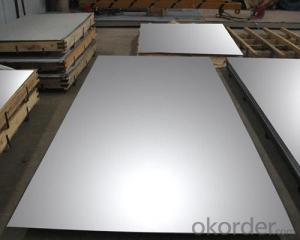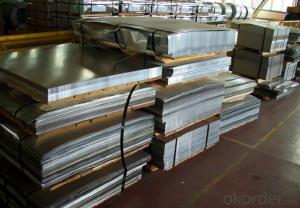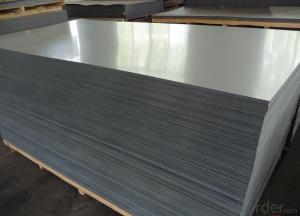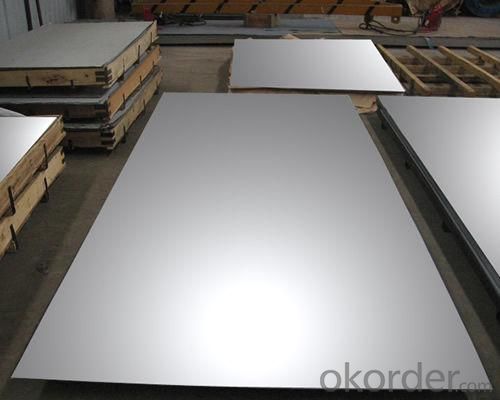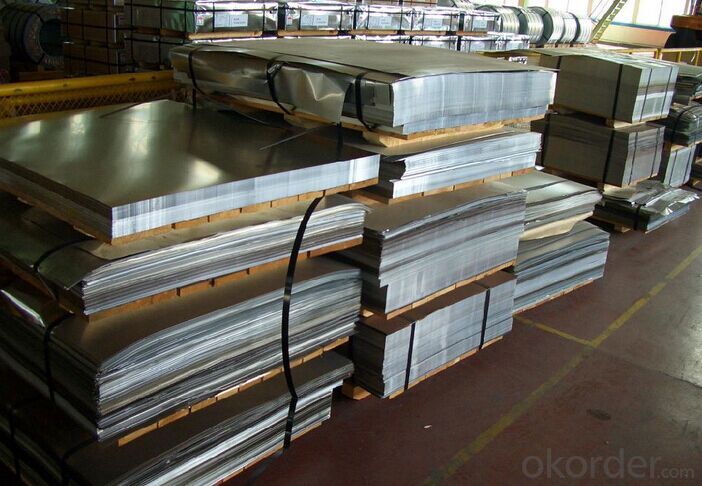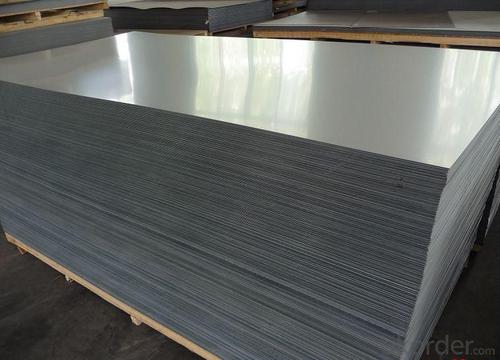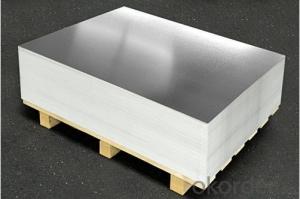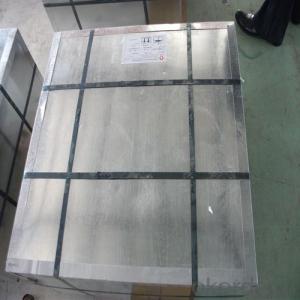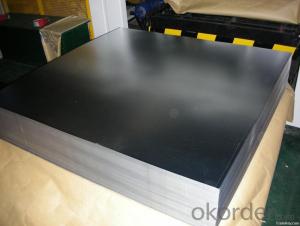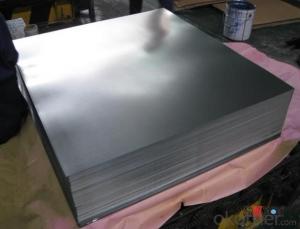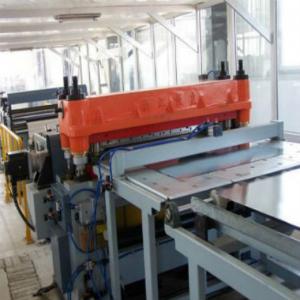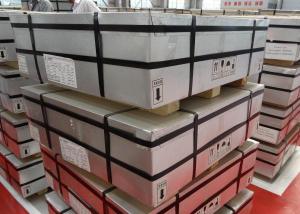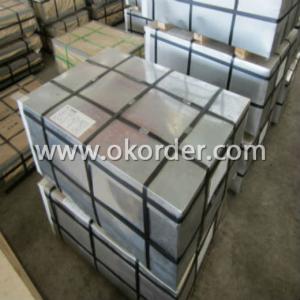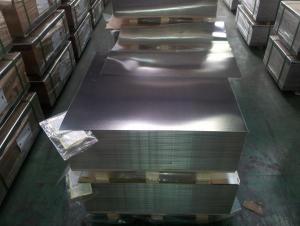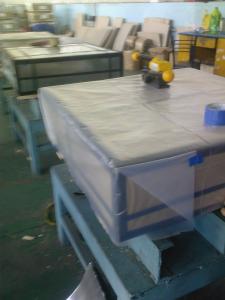Electrolytic Tinplate Sheets for Cans Making
- Loading Port:
- Tianjin
- Payment Terms:
- TT OR LC
- Min Order Qty:
- 25 m.t
- Supply Capability:
- 7000 m.t/month
OKorder Service Pledge
OKorder Financial Service
You Might Also Like
1.Structure of Electrolytic Tinplate Sheets for Cans Making Description
Electrolytic Tin Plate Coils and Sheets for Foods Metal Packaging, is one thin steel sheet with a coating of tin applied by electrolytic deposition. Tinplate made by this process is essentially a sandwich in which the central core is strip steel. This core is cleaned in a pickling solution and then fed through tanks containing electrolyte, where tin is deposited on both sides. As the strip passes between high-frequency electric induction coils, it is heated so that the tin coating melts and flows to form a lustrous coat.
2.Main Features of the Electrolytic Tinplate Sheets for Cans Making
Appearance – Electrolytic Tin Plate is characterized by its beautiful metallic luster. Products with various kinds of surface roughness are produced by selecting the surface finish of the substrate steel sheet.
Paintability and printability – Electrolytic Tin Plates have excellent paintability and printability. Printing is beautifully finished using various lacquers and inks.
Formability and strength – Electrolytic Tin Plates have got very good formability and strength. By selecting a proper temper grade, appropriate formability is obtained for different applications as well as the required strength after forming.
Corrosion resistance – Tinplate has got good corrosion resistance. By selecting a proper coating weight, appropriate corrosion resistance is obtained against container contents. Coated items should meet 24 hour 5 % salt spray requirement.
Solderability and weldability – Electrolytic Tin Plates can be joined both by soldering or welding. These properties of tinplate are used for making various types of cans.
Hygienic – Tin coating provides good and non toxic barrier properties to protect food products from impurities, bacteria, moisture, light and odours.
Safe – Tinplate being low weight and high strength makes food cans easy to ship and transport.
Eco friendly – Tinplate offers 100 % recyclability.
Tin is not good for low temperature applications since it changes structure and loses adhesion when exposed to temperatures below – 40 deg C.
3.Electrolytic Tinplate Sheets for Cans Making Images
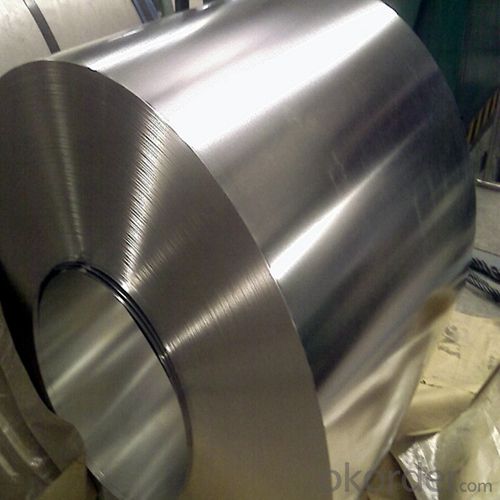
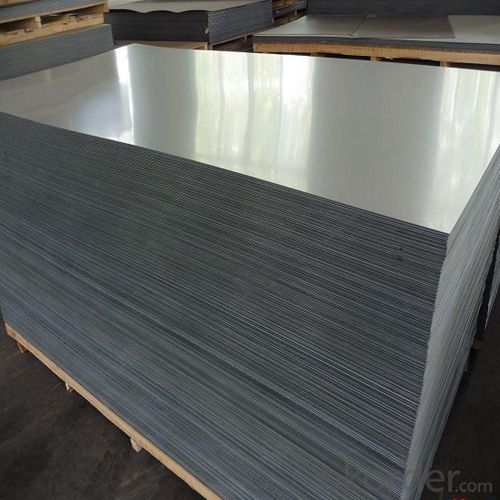
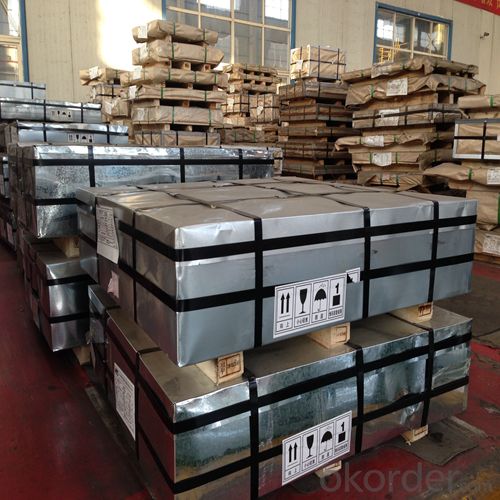
4.Electrolytic Tinplate Sheets for Cans Making Specification
Standard | ISO 11949 -1995, GB/T2520-2000,JIS G3303,ASTM A623, BS EN 10202
|
Material | MR,SPCC |
Thickness | 0.15mm - 0.50mm |
Width | 600mm -1150mm |
Temper | T1-T5 |
Annealing | BA & CA |
Coil Inner Diameter | 508mm |
Weight | 6-10 tons/coil 1~1.7 tons/sheets bundle |
Passivation | 311 |
Oil | DOS |
Surface | Finish,bright,stone,matte,silver |
5.FAQ of Electrolytic Tinplate Sheets for Cans Making
- How are the Electrolytic Tin Plates specified?
The Electrolytic Tin Plates are specified as per the steel base, extent of tempering, the coating weight, annealing method and the surface finish.
- How many types there are for base steels?
The base steels are of three types: Type MR, L, D
- Q: What are the printing options for tinplate?
- The printing options for tinplate include lithography, screen printing, and digital printing.
- Q: What are the main trends in tinplate packaging?
- Some of the main trends in tinplate packaging include the increasing demand for sustainable and eco-friendly packaging solutions, the rise of convenient and innovative packaging designs, and the incorporation of advanced technologies for improved product protection and preservation. Additionally, there is a growing preference for personalized and customized tinplate packaging to enhance brand identity and consumer engagement.
- Q: Can tinplate be used for hazardous material packaging?
- Yes, tinplate can be used for hazardous material packaging. Tinplate is a durable and corrosion-resistant material that can effectively contain and protect hazardous substances. Its ability to withstand pressure, temperature variations, and chemical reactions makes it suitable for packaging hazardous materials. Additionally, tinplate is often used for food and beverage containers, which require stringent safety standards, further supporting its suitability for hazardous material packaging.
- Q: What are the main growth drivers for the tinplate industry?
- The main growth drivers for the tinplate industry include increasing demand from the packaging sector, particularly for food and beverages, as tinplate offers excellent preservation properties. Additionally, the growing popularity of eco-friendly packaging solutions and the rise in disposable income in emerging economies are contributing to the industry's expansion. Furthermore, advancements in manufacturing technologies and the development of innovative tinplate products are driving the growth of the industry.
- Q: Can tinplate be painted?
- Yes, tinplate can be painted.
- Q: Can tinplate be used for gift packaging?
- Yes, tinplate can be used for gift packaging. It is a versatile material that offers durability and aesthetic appeal, making it suitable for creating attractive and protective packaging for various gift items.
- Q: Can tinplate be used for ammunition?
- Yes, tinplate can be used for ammunition. Tinplate is a type of steel plated with a thin layer of tin, which provides corrosion resistance and durability. It is commonly used for manufacturing metal cans, including ammunition containers.
- Q: How is tinplate affected by exposure to UV light?
- Tinplate is generally not affected by exposure to UV light as it is a highly durable and corrosion-resistant material. However, prolonged exposure to intense UV radiation may cause minor color fading or surface discoloration over an extended period of time.
- Q: Can tinplate be recycled with other metals?
- Yes, tinplate can be recycled with other metals. Tinplate is typically made from steel coated with a thin layer of tin, and both steel and tin can be recycled. When tinplate is recycled, it is usually separated from other materials and processed separately to recover the steel and tin content.
- Q: Can tinplate be used as a water tower? Is hot water durable?
- Tinplate is commonly known as tin plated thin steel plate. It is a cold-rolled low carbon steel sheet or strip coated with pure tin on both sides. Tin plays a major role in preventing corrosion and rusting.
Send your message to us
Electrolytic Tinplate Sheets for Cans Making
- Loading Port:
- Tianjin
- Payment Terms:
- TT OR LC
- Min Order Qty:
- 25 m.t
- Supply Capability:
- 7000 m.t/month
OKorder Service Pledge
OKorder Financial Service
Similar products
Hot products
Hot Searches
Related keywords
